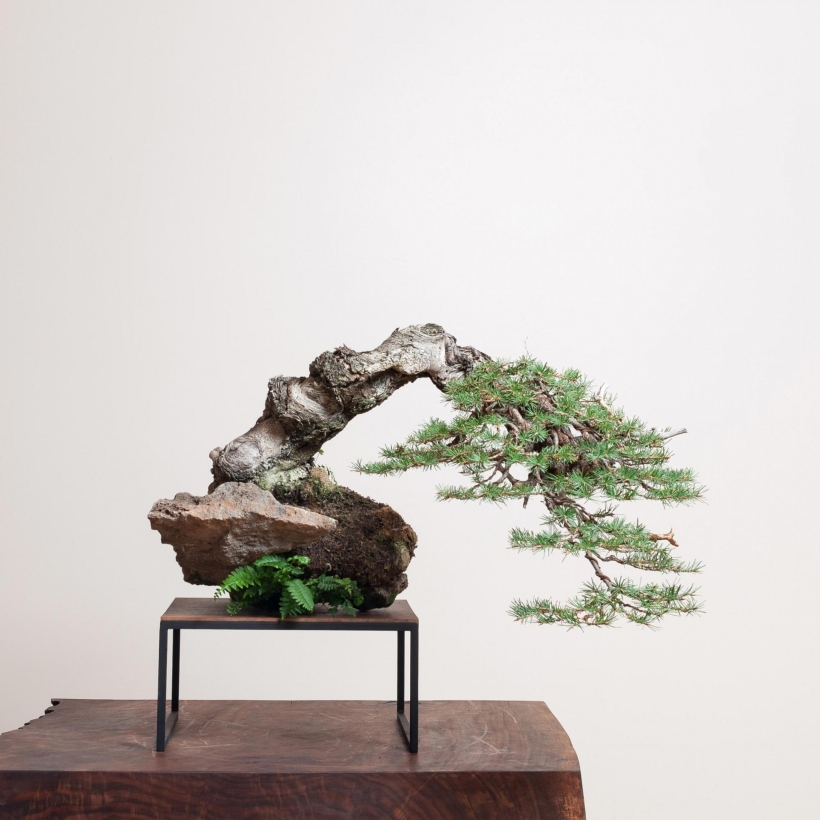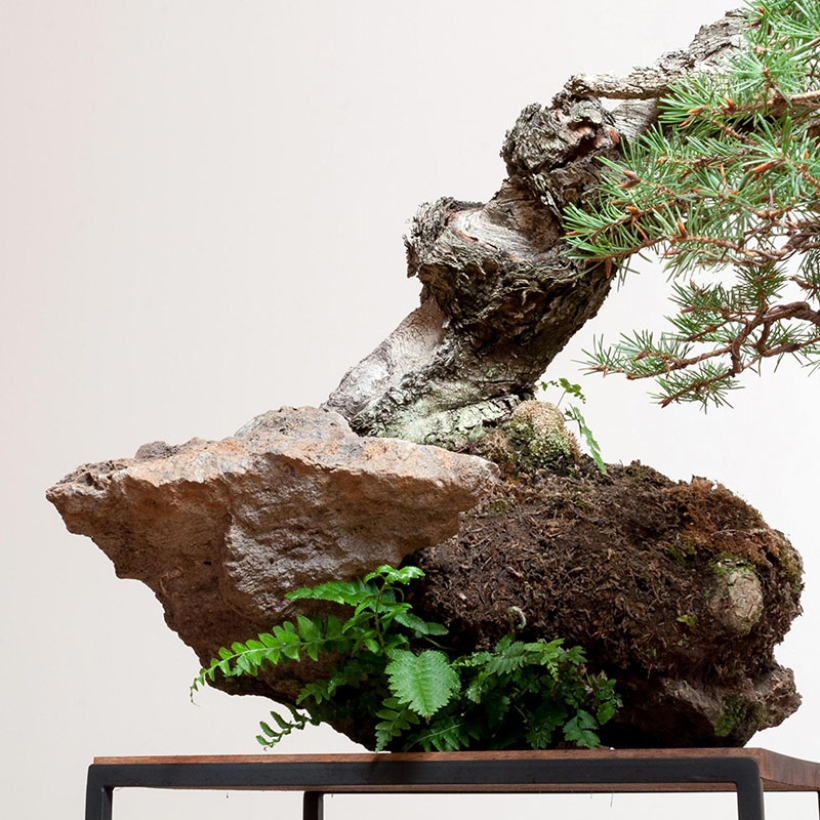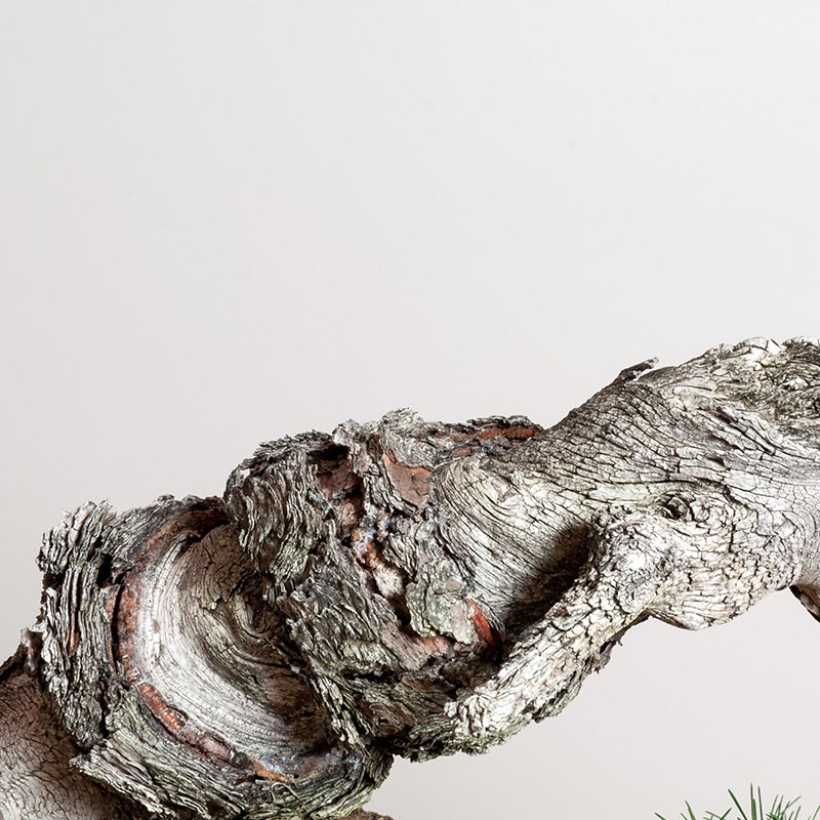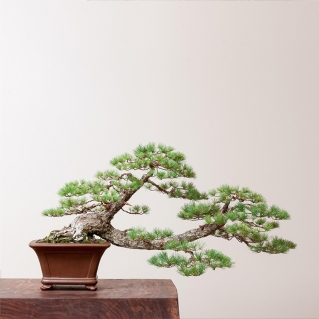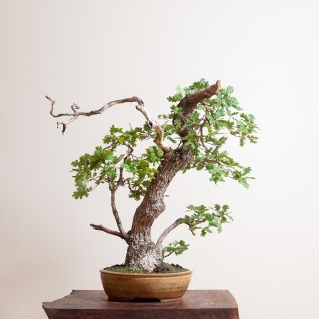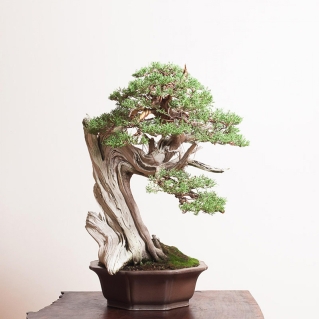Douglas Fir Bonsai
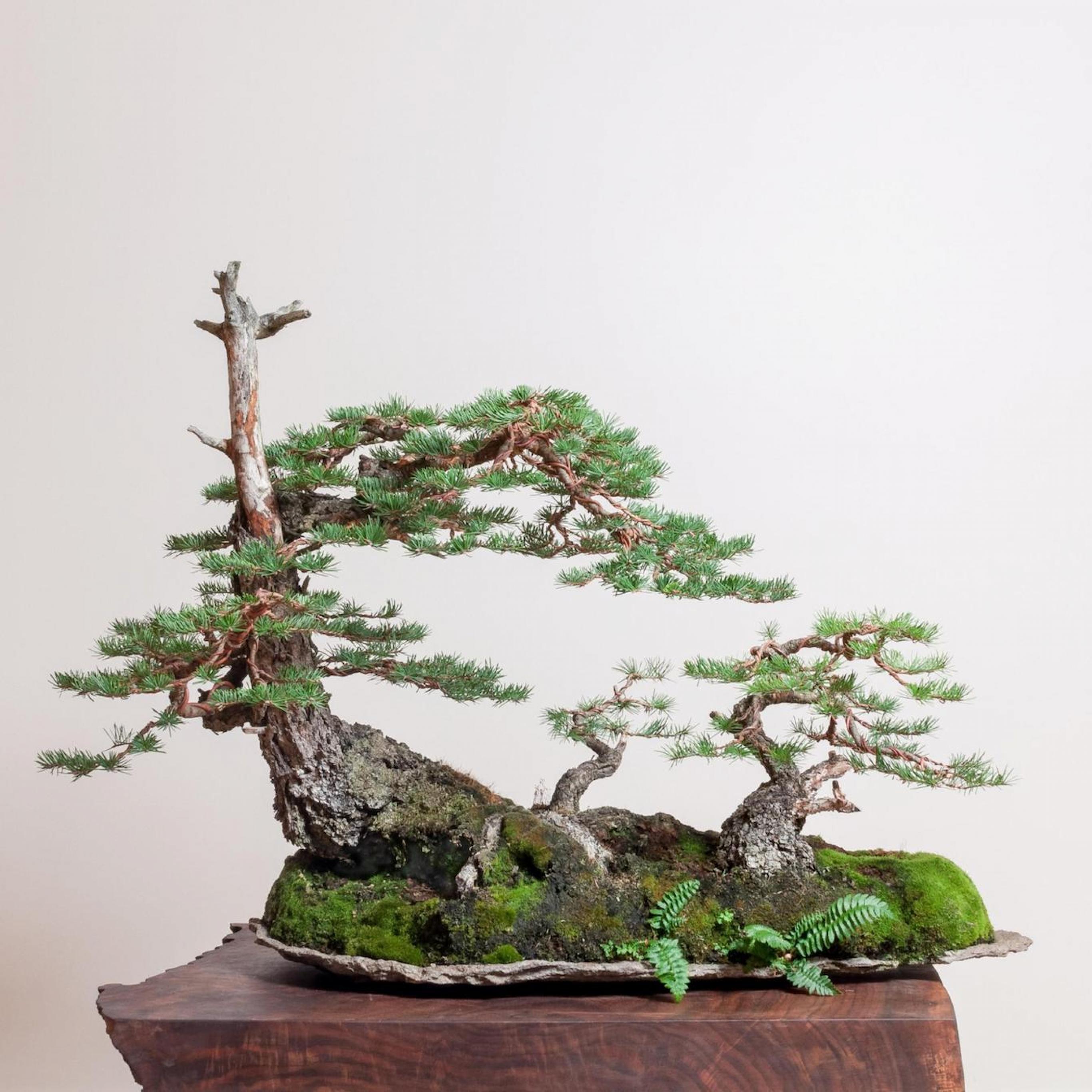
General Information
Native to Western North America, Douglas fir—Pseudotsuga menziesii— is an evergreen conifer that grows quite large (up to 330 feet) and regularly lives for over 500 years. It is known as a dominant and powerful elongating species.
Douglas fir has impressive characteristics. Not only is it rugged and durable, but its bark changes throughout its lifetime.
A young Douglas fir has bark that is:
- Thin
- Smooth
- Grey; and
- Has resin blisters
An older Douglas fir has bark that is:
- Thick
- A mixture of dark brown and lighter colored; and
- Has vertical fissures from growth
Leaves of a Douglas fir bonsai tree are flat and soft, usually about 2-4 cm long and encircle the branches. When growing in a dense forest, Douglas fir lose lower branches as they get taller. But when grown in an environment with more light, there are likely still branches closer to the ground.

Caring for Douglas Fir Bonsai
Watering
Of all conifers in North America, Douglas fir is the most challenging when it comes to watering.
Douglas fir bonsai trees are an elongating species, meaning they typically love water. However, they are unique in that they need the perfect balance of water and oxygen for proper growth and survival.
If Douglas fir bonsai are too wet, the roots will atrophy and recede. If they’re too dry, the foliage mass will burn.
Sun Exposure
Douglas fir bonsai thrive in full sun and will almost always respond well to full exposure.
As mentioned, weaker trees may require a small percentage of shade to help stay cool and achieve their best growth.
Temperature
Douglas fir bonsai depend on and thrive in full sun and light all year around.
However, there are two nuances to be aware of when it comes to temperature:
1. When Douglas fir is in its soft spring growth period and gets hit with unexpected high temperatures, they are prone to easily burning. This might lead you to believe they need protection from the sun.
2. If a Douglas fir has been freshly repotted and is producing strong and healthy growth, it is susceptible to moderate temperatures in full sun until it hardens off.
A large Douglas fir bonsai loves full sun and high temperatures and will respond well to temperatures 100℉ and above. But there are certain situations where Douglas fir may require a bit of shade.
A weaker tree, such as a diseased tree, will require 20-30% shade if temperatures exceed 90℉ because it cannot remove heat on its own.
Fertilizing
Douglas fir bonsai require fertilization during the entire growth season, from early spring through early fall.
Pruning
Douglas fir often presents with two different types of buds: mature and juvenile.
The most significant styling happens in early spring before new growth takes place. During this time you can cut back branches, remove branches, and cut shoots back. Throughout spring, new growth will happen and harden off. At this point, you can prune back new growth to the juvenile buds. However, if you wait too long, until middle to late summer, you can no longer prune the new growth to have juvenile buds successfully mature. The window for this is crucial for optimal growth.
If done correctly, between this point of pruning and early fall, juvenile buds will turn into mature buds.
Douglas fir goes into dormancy earlier than any other conifer species—starting early to mid-fall—so pruning should not take place from this point until the following spring to achieve optimal growth the next year.
Repotting
The optimal time to repot a Douglas fir is in spring as buds begin to swell and open up.
However, Douglas fir does not readily move out of native soil. To survive the hot arid environments of the Rocky Mountains, soil of a Douglas fir is:
- Dense
- Compact
- Black; and
- Contains a high degree of organic matter
It’s not uncommon for the roots of a Douglas fir to not respond well to a domestic soil mix once repotted.
When repotting, soil mixture should have a 1:1:1 ratio of:
- Akadama
- Pumice; and
- Lava
It’s important to sift through and remove the finest particles of soil, using only particles between 2-6mm.
Propagation
Douglas fir bonsai are classified as conifer which means they are seed-producing trees.
Seeds are produced inside cones and have a single wing that spreads them via wind.
Pests/Disease
Douglas fir bonsai, and many other elongating species with soft, fleshy leaves, are susceptible to spider mites. Spider mites have strength in numbers and can quickly infest a tree or plant.
They also commonly suffer from Swiss Needle Cast, the shedding of second or third-year needles prematurely which reduces the photosynthetic surface area and weakens the tree over the fall season.
Douglas Fir Bonsai FAQS
The biggest indication a Douglas fir bonsai tree has recovered from any substantial activity—styling, repotting, or collection processes—is when mature buds begin to form on old wood independent of where the needle mass exists.
This activity means the Douglas fir tree has enough of a root system to sustain itself.
Douglas fir bonsai trees will suffer when kept too wet, causing their root system to deteriorate over time. They require a healthy balance of water and oxygen to thrive, and it’s better to keep a Douglas fir slightly more dry than too wet.
If you don’t prune a Douglas fir during its optimal timeframe—three to four weeks post hardening—juvenile buds will not mature in the same season. This will heavily affect the life of the tree because if you miss optimal pruning, you lose a year of growth.
